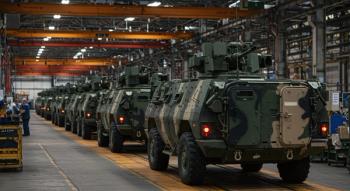
Wavelength Tech Forum: Optics/Lasers
In this month's Technology Forum, Rob Morris with Ocean Optics, Robert E. Rachlis, consultant for optical systems and applications, and Howard Mark, with Mark Electronics discussed Optics/Lasers. Here is your chance to participate in their discussion.
This month’s Technology Forum looks at the topic of Optics/Lasers and the trends and issues surrounding it. Joining us for this discussion are Rob Morris, with Ocean Optics, Robert E. Rachlis, consultant for optical systems and applications, and Howard Mark, with Mark Electronics.
How has laser-induced breakdown spectroscopy affected the laser spectroscopy industry?
(Morris) Not much at all, I don’t think. Right now, the size of the LIBS market pales in comparison with the size of the laser market for other applications. In general, however, LIBS suppliers benefit from the market requirements of all these other laser applications â namely, lasers that are more compact and less expensive than existing technologies. An important sidebar to that is that the laser power supplies need those same types of improvements.
(Rachlis) Offhand I am not familiar with laser induced breakdown, but last week I was visiting a friend at the University of Arkansas and they were setting up to investigate molecular excited state properties using diode pumped lasers doubled with BBO crystals to create precisely tuned and timed pulses pushing the limits of spectral purity, short pulse duration, and power.
(Mark) More development and use of lasers directly as the source for spectroscopic measurement. Scanning lasers currently have relatively small range coverage, are somewhat tricky to use, and are expensive. Laser-based spectrometers would have all the characteristics that a spectroscopist would want: intense light, narrow wavelength band for high-resolution measurements, and easily controlled. But if they were also small, light, cheap, robust, and had wide wavelength coverage, they would make essentially a "perfect" spectrometer.
Right now, what do you think is new and exciting in the field of optics?
(Morris) There is some interesting work being done in dichroic filter array optics, where improved processes and techniques are being integrated into products in laser optics and medical applications, as well as a number of consumer market possibilities.
(Rachlis) Excitement in optics ranges from the miniscule to the gargantuan. Quantum dots are being explored for applications ranging from detection to illumination to data storage. Servo controlled surfaces in adaptive optic elements are guiding the image elements of telescopes probing the reaches of the universe and of photolithographic tools creating the next generation of computer chips. The controlled mirror array is providing real time projection without the need of film intermediates as well as possibly replacing lithography masks for on the fly correction or optimization.
(Mark) The other technology, that I can think of that isn't used very much, is holograms. Of course, they are one way to manufacture diffraction gratings, but at best, that's an indirect connection to the act of measuring a spectrum. I know of no direct use of holography in spectroscopic measurement, so developing a holographically-based method would certainly be a technical breakthrough.
What further advancements do you see in optics?
(Morris) Adaptive optics certainly looks interesting. Although the field has been around since at least the ‘90s, it seems to be picking up some momentum for applications other than astronomy. If Google hits are any indication, adaptive optics is pretty hot these days, with more than a million search entries.
(Rachlis) Materials are always a challenge in optics. New materials for fiber optics, crystals, and glasses will provide improved uniformity and homogeneity giving longer life, reduced attenuation and less susceptibility to flaws and deterioration.
What application areas for laser spectroscopy remain unexplored?
(Morris) In LIBS technology, being able to quantify the data can be challenging. Part of it has to do with flash-to-flash variation in the laser, which can be overcome relatively easily, but more significant are matrix effects that occur when analyzing something like metals, for example.
Which techniques for optics and lasers do you see being the most popular/important in the future?
(Morris) We hear about ultra-fast lasers, and about various nanotechnology applications, but nothing meaningful comes to mind.
What do you think?
Newsletter
Get essential updates on the latest spectroscopy technologies, regulatory standards, and best practices—subscribe today to Spectroscopy.




